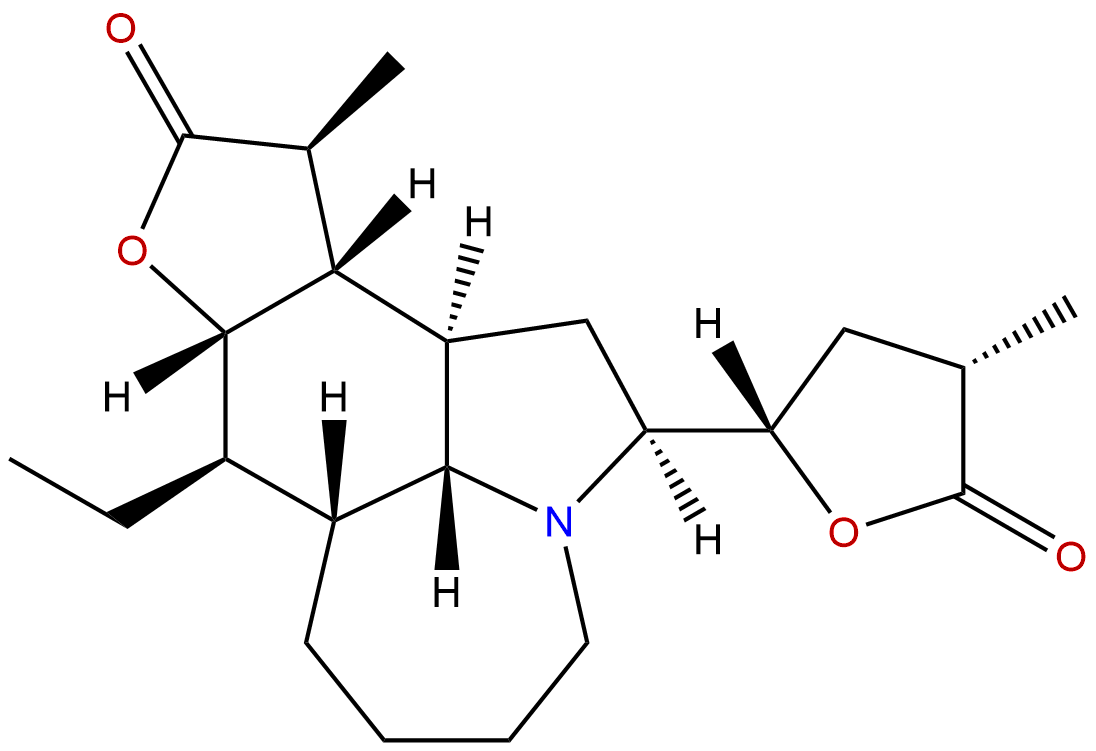
TuberostemonineCAS No.:6879-01-2
|
||||||||||
 |
|
|
||||||||

| Catalogue No.: | BP1417 |
| Formula: | C22H33NO4 |
| Mol Weight: | 375.509 |
Synonym name:
Catalogue No.: BP1417
Cas No.: 6879-01-2
Formula: C22H33NO4
Mol Weight: 375.509
Botanical Source: Alkaloid from Stemona tuberosa, Stemona japonica and Stemona sessilifolia (Stemonaceae)
Purity: 95%~99%
Analysis Method: HPLC-DAD or/and HPLC-ELSD
Identification Method: Mass, NMR
Packing: Brown vial or HDPE plastic bottle
Can be supplied from milligrams to grams.
For Reference Standard and R&D, Not for Human Use Directly.
Inquire for bulk scale.
Description:
Tuberostemonine has antitussive activity, acts in part as an open-channel blocker at the crayfish neuromuscular junction; it also exhibits relatively higher intestinal permeabilities.
References:
Planta Med. 2009 May;75(6):575-80.
Oral absorption and antitussive activity of tuberostemonine alkaloids from the roots of Stemona tuberosa.
The intestinal absorption of four stereoisomers of Tuberostemonine-type alkaloids, neoTuberostemonine (1), Tuberostemonine (2), Tuberostemonine H (3), and Tuberostemonine J (4), isolated from the antitussive Chinese medicinal herb Radix Stemonae, and the IN VIVO antitussive activity of alkaloids 1, 2 and 3 were investigated in the current study.
METHODS AND RESULTS:
All three alkaloids exhibited dose-dependent inhibitory effects on citric acid-induced cough in guinea pigs after intraperitoneal administration. Alkaloid 2 had the same potency via both oral and intraperitoneal dosing, 1 exhibited significantly lower oral activity than that following intraperitoneal application, while 3 did not show oral activity.
CONCLUSIONS:
Alkaloid 4 demonstrated a moderate permeability in Caco-2 monolayer cells while alkaloids 1, 2 and 3 exhibited relatively higher intestinal permeabilities, indicating that all four alkaloids tested had reasonable oral absorption.